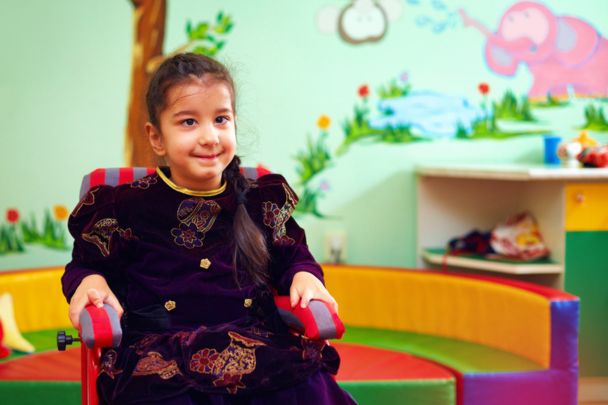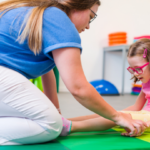For parents, watching your child struggle with everyday movements due to spastic cerebral palsy can be difficult. The stiffness and muscle tightness that characterize this condition make even the simplest tasks a challenge. But with the right support and care, there are ways to help your child move more comfortably and live a fuller life.
What is Spastic Cerebral Palsy?
Spastic cerebral palsy is the most common type of cerebral palsy, affecting roughly 80% of children diagnosed with this condition. It is characterized by increased muscle tone, resulting in stiffness and difficulties with movement. This stiffness, known as spasticity, is caused by disrupted signals from the brain to the muscles, making even simple movements challenging.
How Spasticity Affects Movement
In children with spastic cerebral palsy, the muscles often feel tight and resist movement. This can lead to difficulties in performing everyday activities such as walking, dressing, and eating. The degree of spasticity can vary from mild to severe, affecting one or more limbs, and may require different levels of intervention to manage effectively.
Signs and Symptoms of Spastic Cerebral Palsy
Spastic cerebral palsy presents with various symptoms that may affect different parts of the body. These symptoms can include:
- Stiff or tight muscles, particularly in the legs, arms, and back.
- Abnormal gait, such as walking on toes or a scissoring gait where the knees cross.
- Difficulty with fine motor skills, such as picking up small objects or writing.
- Delayed milestones, including sitting, crawling, and walking.
- Difficulty with speech due to spasticity in the facial and throat muscles.
Types of Spastic Cerebral Palsy
Spastic cerebral palsy is divided into several types based on the limbs affected:
- Spastic Diplegia: Primarily affects the legs, making walking difficult.
- Spastic Hemiplegia: Affects one side of the body, usually an arm and a leg.
- Spastic Quadriplegia: Affects all four limbs and the body, often resulting in severe mobility and communication challenges.
Managing Spastic Cerebral Palsy
There is no cure for spastic cerebral palsy, but there are various treatments available to help manage the symptoms and improve your child’s quality of life. A multidisciplinary approach, often involving pediatric neurologists, orthopedists, physical therapists, and other specialists, is essential for comprehensive care.
Physical Therapy
Physical therapy is a cornerstone of treatment for children with spastic cerebral palsy. It helps improve mobility, strength, and coordination. Regular therapy sessions can also prevent the worsening of contractures (permanent muscle shortening) and help your child achieve greater independence in daily activities.
Orthotic Support
Braces, such as ankle foot orthoses (AFOs), are commonly prescribed to support the feet and ankles, helping children walk more efficiently. These braces can prevent issues like toe walking and improve overall stability.
Medical and Surgical Interventions
- Botox Injections: Used to reduce muscle spasticity and improve movement.
- Surgery: In cases where spasticity causes severe deformities or pain, surgical interventions may be necessary to correct bone and muscle alignment.
The Importance of Regular Monitoring and Adjustments
As your child grows, their needs and the effectiveness of treatments may change. Regular check-ups with your child’s care team are crucial to ensuring that therapies and interventions are adjusted to provide the best outcomes.
Supporting Your Child’s Emotional Well-being
Children with spastic cerebral palsy may face challenges beyond their physical symptoms, including feelings of frustration, embarrassment, or isolation. It’s important to provide emotional support and ensure that your child feels included and understood. Encouraging participation in activities, fostering social connections, and seeking support from counselors or support groups can make a big difference in your child’s mental health.
Empowering Parents and Families
Navigating life with spastic cerebral palsy can be overwhelming, but you are not alone. At Children’s Cerebral Palsy, we are here to support you every step of the way. From providing medical care to offering resources and guidance, our goal is to help your child reach their full potential.
Choose a Holistic Approach to Care
Caring for a child with cerebral palsy requires a comprehensive and compassionate approach. By understanding the condition, seeking regular care, and focusing on your child’s physical and emotional needs, you can help them achieve a better quality of life. At Children’s Cerebral Palsy, we are committed to partnering with you on this journey, providing the expert care and support your family deserves.
Meet Dr. David Siambanes
Dr. Siambanes, a board-certified orthopedic surgeon, is fellowship-trained in both pediatric orthopedics and spinal deformities. His passion for addressing the needs of disabled children has led to his expertise in the treatment of cerebral palsy.
He has performed countless procedures to improve walking and sitting tolerance, reducing pain and correcting deformities in children with cerebral palsy.
Click here to request a consultation with Dr. Siambanes today.






